Yes, penguins have feathers, not fur and they have about 100 feathers per square inch. The feathers keep them warm in the cold ocean waters they inhabit. The outer feathers are waterproof and the downy underlayer provides insulation.
The unique structure of penguin feathers allows them to regulate their body temperature and maintain buoyancy while swimming.
In addition to providing warmth, penguin feathers also serve as a means of communication and display during courtship.
About Penguins’ Fur or Feathers
Do all penguins have hair or fur?
All penguins have feathers, not fur. The feathers of penguins are specially adapted to their aquatic environment, serving to insulate their bodies and keep them warm in the cold waters they swim in.
The outer feathers of penguins are waterproof and provide a barrier against the cold, while the soft, downy underlayer provides insulation.
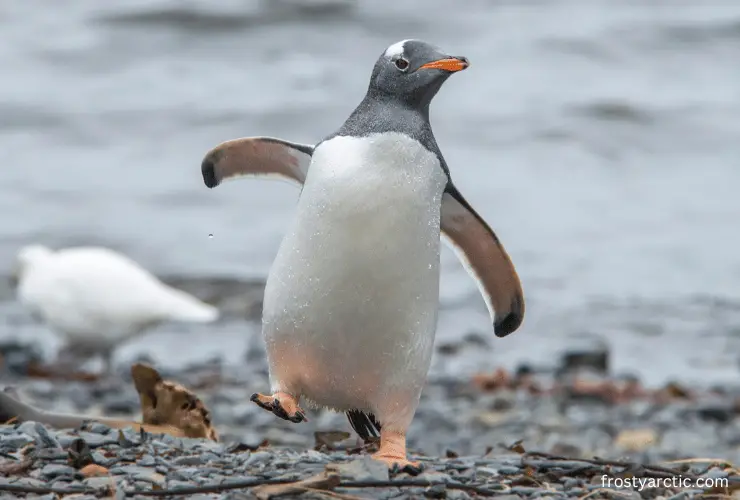
This unique combination of feathers allows penguins to regulate their body temperature and maintain buoyancy while swimming.
Penguins also use their feathers for communication and display during courtship. Some species have bright, distinctive feather patterns that they use to attract mates, and the rustling of feathers can serve as a form of vocal communication.
Additionally, penguins use their feathers to regulate their body temperature by fluffing them up or pressing them close to their bodies.
The Thickness of a Penguin’s Coat of Feathers
The thickness of a penguin’s coat of feathers varies among species, but generally, it is thicker in colder regions to provide additional insulation.
The down feathers, which form the inner layer, are particularly dense and fluffy, while the outer feathers are waterproof and form a barrier against the cold.
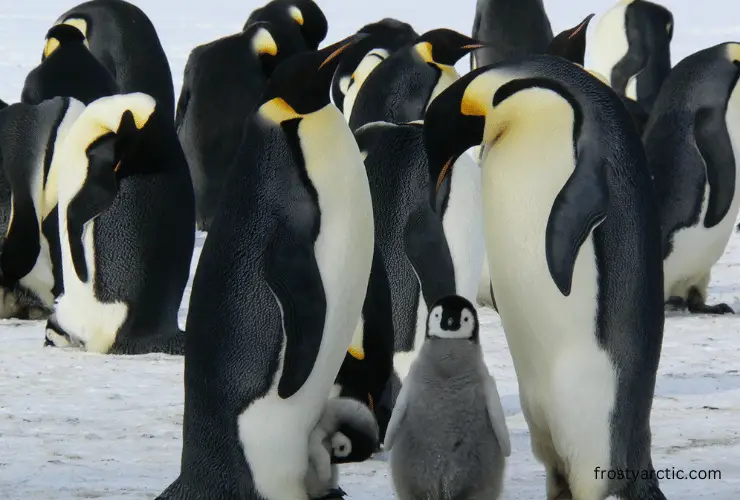
The thickness of the feather coat helps penguins to regulate their body temperature and maintain a comfortable internal temperature even in the harsh conditions of the polar regions.
Some species of penguins, such as the Emperor Penguin, have particularly thick coats of feathers to help them survive in the extremely cold temperatures of the Antarctic.
a) Fur or feathers on Emperor Penguins
Emperor penguins, like all penguin species, have feathers, not fur.
Emperor penguins are the tallest and heaviest of all penguin species, and they are well adapted to the harsh, cold conditions of the Antarctic.
Their feather coat is particularly thick, with dense down feathers forming the inner layer for insulation and waterproof outer feathers forming a barrier against the elements.
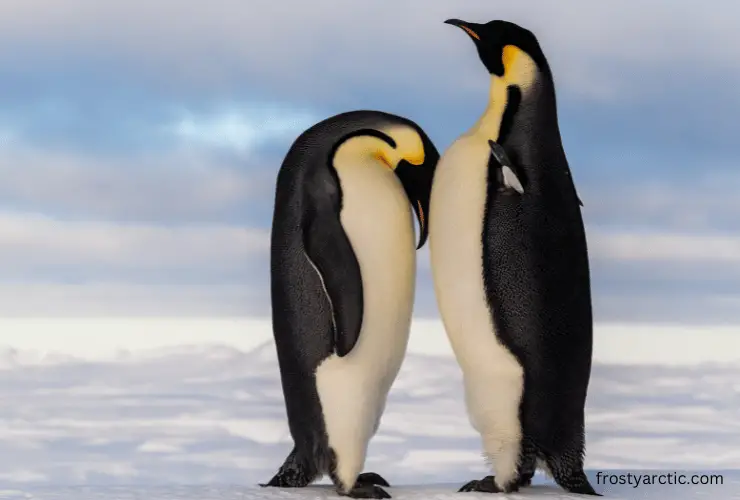
This thick coat of feathers helps emperor penguins to regulate their body temperature and maintain a comfortable internal temperature even in extreme cold.
The unique structure of the emperor penguin’s feathers also provides buoyancy while swimming, allowing them to hunt efficiently in the icy waters of their habitat.
b) Baby Penguins Have Fur or Feathers
Baby penguins, like all young birds, hatch from their eggs with a soft downy feather covering, which serves as an initial source of insulation. As they grow, they develop a full coat of feathers, similar to that of adult penguins.

Baby penguins rely on their feathers to regulate their body temperature and maintain a comfortable internal temperature, which is especially important in their harsh environments.
The waterproof outer feathers and soft downy underlayer work together to provide insulation, making the penguin’s feather coat a highly effective adaptation to the cold, aquatic environments in which they live.
Do Penguins Have Fur on Their Head?
Penguins do not have fur on their heads. Like all penguins, their entire body is covered in feathers, which serve multiple purposes, including insulation, buoyancy, communication, and display.
The feathers on a penguin’s head are no different from those on the rest of its body, serving to regulate its body temperature and provide insulation.
Some species of penguins may have distinctive head feathers, such as crests or plumes, that they use for display during courtship or as a means of identification.
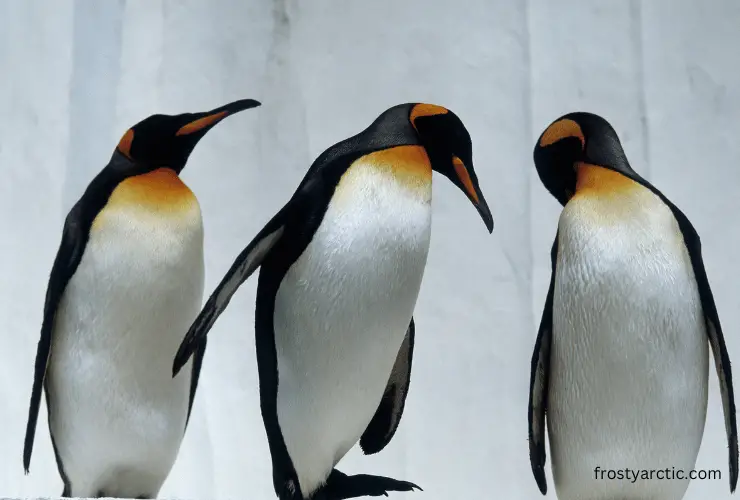
These feathers can be particularly eye-catching, with bright colors or unique shapes that serve as a visual signal to other penguins.
However, despite these unique features, penguins do not have any fur on their heads or anywhere else on their bodies.
Key Reasons Why Penguins Have Feathers
Feathers serve multiple purposes, including:
- Insulation: The downy underlayer of penguin feathers provides insulation to help regulate their body temperature in the cold ocean waters they inhabit.
- Waterproofing: The outer feathers of penguins are waterproof, which helps to keep them dry and warm while swimming.
- Buoyancy: The unique structure of penguin feathers provides buoyancy, allowing them to swim more efficiently and conserve energy while hunting.
- Display: Some species of penguins have distinctive feather patterns that they use to attract mates during courtship.
- Communication: The rustling of feathers can serve as a form of vocal communication among penguins.
- Temperature regulation: Penguins can fluff up their feathers or press them close to their bodies to regulate their body temperature and maintain a comfortable internal temperature.
Why Do Penguins Have Oily Feathers?
Penguins have oily feathers to help keep their skin and feathers waterproof.
The oil, produced by a gland near the tail, is spread over the feathers in a process known as preening. It helps keep the feathers smooth and flexible, reducing drag and improving the penguin’s ability to swim efficiently in the water.
The oil also acts as a barrier against moisture, preventing water from soaking into the feathers and compromising their insulating properties.
The waterproofing of penguin feathers also helps to protect the birds from the salt and other harmful substances in the water, ensuring that they are able to maintain their feather coat and continue to swim effectively.
By maintaining the integrity of their feathers, penguins are better equipped to withstand the harsh conditions of their aquatic environments and remain comfortable and efficient swimmers.
The waterproof feathers are a critical adaptation that enables penguins to survive and thrive in their challenging aquatic environments.
FAQ
What are penguin feathers called?
Penguin feathers are referred to simply as feathers, like all birds. They are composed of a central shaft, called a quill, with vanes on either side that are covered in a thin layer of keratin.
What is baby penguin fur called?
Baby penguins, like all young birds, are covered in a soft downy feather covering called “chick down.”
Do penguins shed their fur?
No, penguins do not have fur; they have feathers. Like all birds, penguins do periodically molt or shed and replace their feathers.
Do penguins have waterproof feathers or fur?
Penguins have waterproof feathers, which is a key adaptation that helps the birds to stay warm and dry while swimming in the water.
Conclusion
In conclusion, penguins have a unique set of adaptations that allow them to thrive in their aquatic environments.
Their feathers serve multiple purposes, including insulation, waterproofing, buoyancy, display, and communication. The structure and composition of penguin feathers are well-adapted to their aquatic habitats, providing the birds with the necessary tools to survive and thrive in these challenging environments.

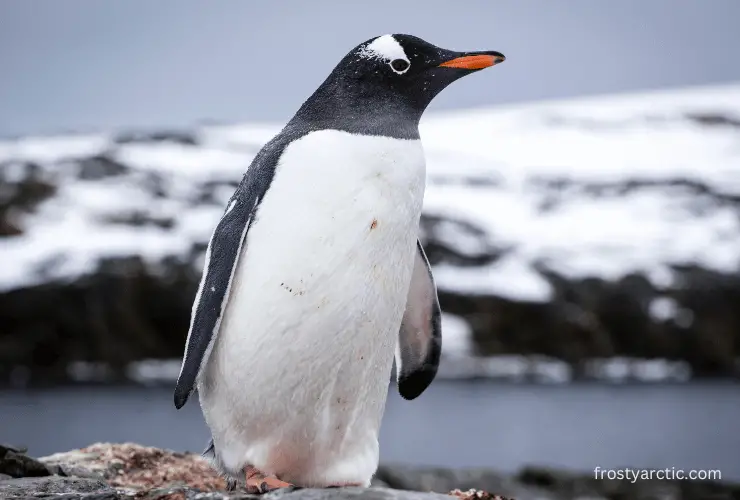

1 thought on “Do Penguins Have Feathers or Fur?”